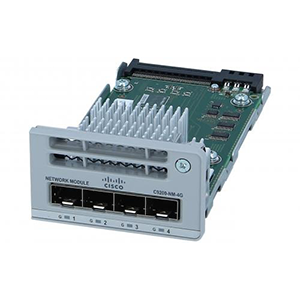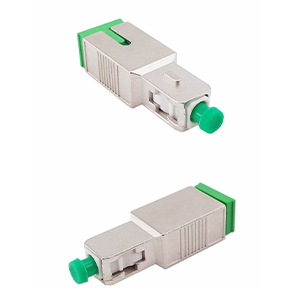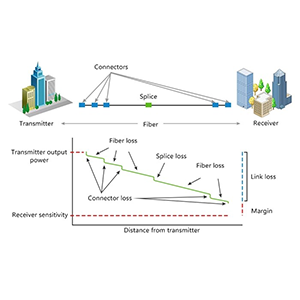Network cables undoubtedly play an important role in modern networks. This article will focus on CAT8 network patch cables. We will first outline common Ethernet cable standards, including CAT5, CAT6, CAT7, etc., and compare the differences between different grades of network cables in terms of bandwidth, transmission distance, etc. Next, we will elaborate on the physical structure and technical parameters of CAT8 network patch cables, and analyze its advantages in transmission performance, anti-interference, etc.
After that, we will list typical network environments suitable for using CAT8 network patch cables, and explain its advantages and requirements in different applications. In addition, we will provide key considerations for purchasing CAT8 network patch cables and introduce their correct installation and use methods.
Ethernet cable classification and technical characteristics
Let me introduce you to the common Ethernet cable standards and their technical characteristics.
Overview of Ethernet cable standards:
(1) CAT5/CAT5e
- An earlier Ethernet cable standard that supports up to 100Mbps Ethernet transmission.
- CAT5e is an improvement over CAT5, with a maximum transmission rate of 1000Mbps (1Gbps).
(2) CAT6
- CAT6 standard cable bandwidth can reach 1000Mbps, and is a commonly used Gigabit Ethernet cable.
- It has significant improvements in bandwidth, anti-interference, etc., and the transmission distance can reach 100 meters.
(3) CAT6a
- CAT6a is an enhanced version of the CAT6 standard that supports 10Gbps Ethernet transmission.
- The shielding performance of the cable is better, and the transmission distance can reach 100 meters.
(4) CAT7
- CAT7 is a higher-level Ethernet cable standard, which can support up to 40Gbps Ethernet transmission.
- The more advanced double-shielded design is adopted, which further improves the bandwidth and anti-interference performance.
Comparison of technical differences between different levels of network cables:
(1) Bandwidth
- CAT5/CAT5e supports 100Mbps, and CAT6 supports 1000Mbps (1Gbps).
- CAT6a and CAT7 can support Ethernet transmission rates of 10Gbps and 40Gbps.
(2) Transmission distance
- The transmission distance of CAT5/CAT5e is generally within 100 meters.
- The transmission distance of CAT6, CAT6a and CAT7 can all reach 100 meters.
(3) Anti-interference
- CAT6a and CAT7 have stronger shielding performance and stronger anti-interference ability.
- This helps to maintain high-quality signal transmission in complex electromagnetic environments.
(4) Cost
- CAT5/CAT5e has a lower cost, while CAT6 and CAT6a have a medium cost.
- As the latest standard, CAT7 has a relatively high cost.
In general, with the upgrade of standards, Ethernet cables have greatly improved in bandwidth, transmission distance and anti-interference, but the cost has also increased. When choosing cables, users need to balance performance and cost according to actual application requirements.
Technical characteristics of CAT8 patch cables
Let me introduce you to the technical characteristics of CAT8 patch cables in detail.
Physical structure and technical parameters of CAT8 patch cables:
(1) Physical structure
- CAT8 network cables adopt a double shielding design with thicker copper foil and braided shielding layer.
- The core uses AWG22 or AWG24 copper wire, which has higher conductivity.
- The outer layer usually uses low-smoke halogen-free material, which is more environmentally friendly and fireproof.
(2) Technical parameters
- Supports Ethernet transmission rates up to 40Gbps.
- The operating frequency can reach 2GHz, which is much higher than the previous generations of Ethernet cable standards.
- The transmission distance can reach 30 meters, meeting the needs of data center and high-speed network applications.
- The rated impedance is 50 ohms, with lower signal distortion and reflection.
- Meets all technical requirements of CAT8.1 and CAT8.2.
Advantages of CAT8 network cable in transmission performance and anti-interference:
(1) High-speed transmission performance
- CAT8 network cable can support Ethernet transmission rates up to 40Gbps.
- Compared with previous generations of network cable standards, the bandwidth of CAT8 has been greatly improved.
(2) Low signal distortion
- The impedance design of CAT8 network cable is more precise, which can effectively reduce signal distortion.
- This is very important to ensure the integrity of high-speed data transmission.
(3) Excellent anti-interference performance
- The double-layer shielding design greatly improves the anti-interference ability of CAT8 network cable.
- It can effectively suppress the influence of surrounding electromagnetic interference sources.
(4) Reliable transmission distance
- The maximum transmission distance of CAT8 network cable can reach 30 meters, which meets the needs of data center and high-speed network applications.
- Compared with previous generations of network cable standards, the transmission distance has also been significantly improved.
(5) Low radiation characteristics
- CAT8 network cable adopts low smoke halogen-free material and has low electromagnetic radiation.
- This is also very important for some application scenarios that are sensitive to electromagnetic environment.
In general, CAT8 network patch cable has outstanding advantages in high-speed transmission performance, low distortion, strong anti-interference, etc., and is an ideal choice for high-speed Ethernet applications. These characteristics enable it to meet the urgent needs of future data centers and high-speed networks.
Application scenarios of CAT8 network patch cable
Let me analyze for you the typical application scenarios suitable for using CAT8 network patch cable, as well as the advantages of CAT8 network cable in different applications.
Typical network environments suitable for using CAT8 patch cables:
(1) Data center
- Data centers have very high requirements for network bandwidth, transmission distance and anti-interference capabilities.
- CAT8 network cables have a high-speed transmission performance of 40Gbps, which can meet the needs of large-capacity data transmission in data centers.
(2) High-performance computing
- High-performance computing systems need to transmit large amounts of data and instructions over ultra-short distances.
- CAT8 network cables can provide a reliable transmission distance of up to 30 meters to meet the needs of such applications.
(3) 5G mobile network
- The fronthaul and midhaul links of 5G mobile networks have high requirements for network bandwidth and reliability.
- The excellent performance of CAT8 network cables can be used to build high-speed transmission infrastructure for 5G mobile networks.
(4) Industrial Automation
- Industrial automation systems have strict technical indicators for real-time and anti-interference performance.
- The low distortion and strong anti-interference characteristics of CAT8 network cables can provide reliable support for industrial networks.
(5) Monitoring and Security Systems
- Monitoring and security systems usually need to transmit large amounts of audio and video data over long distances.
- The high bandwidth and long transmission distance of CAT8 network cables can well meet the needs of such applications.
Advantages and requirements of CAT8 network cables in different applications:
(1) Data center
- Advantages: 40Gbps high-speed transmission performance can meet the application requirements of large-capacity data centers.
- Requirements: In addition to transmission performance, reliable connection and anti-interference capabilities are also required.
(2) High-performance computing
- Advantages: 30-meter long-distance transmission to meet the needs of close-range interconnection between devices.
- Requirements: Precise impedance design to ensure low signal distortion and high signal integrity.
(3) 5G mobile network
- Advantages: High bandwidth and strong anti-interference, capable of building reliable 5G fronthaul and midhaul networks.
- Requirements: Meet the stringent requirements of 5G networks for low latency and high reliability.
(4) Industrial Automation
- Advantages: Excellent anti-interference performance, able to work reliably in harsh industrial environments.
- Requirements: Meet the stringent technical indicators of industrial automation systems for real-time and anti-interference.
(5) Monitoring and Security Systems
- Advantages: High bandwidth and long transmission distance, reliable transmission of large-capacity audio and video data.
- Requirements: Achieve high-quality video transmission in widely distributed systems.
In short, CAT8 patch cables have shown excellent technical advantages in different application scenarios, and can meet the bandwidth, reliability and anti-interference requirements of various high-speed networks. Understanding these advantages and their corresponding requirements will help users choose the most suitable network cable solution.
Selection and deployment of CAT8 network patch cables
Let me introduce you to the key considerations for selecting and deploying CAT8 network patch cables.
Key considerations for selecting CAT8 network patch cables:
(1) Standard compliance
- Make sure the selected network cable meets all technical requirements of CAT8.1 or CAT8.2.
- This is the premise for ensuring the performance and compatibility of the network cable.
(2) Physical structure
- Pay attention to the physical parameters of the network cable, such as shielding design, conductor specifications, and outer material.
- These will affect the transmission performance and service life of the network cable.
(3) Transmission performance
- Based on the application requirements, select CAT8 network cables that support 40Gbps Ethernet transmission.
- Also consider the required transmission distance and signal integrity.
(4) Environmental adaptability
- For applications in harsh environments, select network cables with good fire and weather resistance.
- Ensure that the network cable works reliably and is not affected by environmental factors.
(5) Brand and quality
- Select CAT8 network cables manufactured by well-known brands with guaranteed quality.
- This helps ensure the long-term stability and reliability of the network cable.
Correct installation and use of CAT8 patch cables:
(1) Preparation before construction
- Check whether the network cable is intact and has no damage.
- Ensure that the installation environment meets the requirements for the use of the network cable, and there is no excessive bending or other mechanical damage.
(2) Professional construction
- Professional installation and joint processing by experienced engineers.
- Ensure that the network cable connector is firmly fixed, the wires are arranged neatly, and there is no short circuit or open circuit.
(3) Correct laying
- Avoid excessive bending and twisting of the network cable, and try to keep the network cable in a straight line.
- If necessary, auxiliary equipment such as cable tubes and bridges can be used to protect the network cables from damage.
(4) Environmental monitoring
- Regularly check the use environment of the network cable to ensure that there is no excessive electromagnetic interference, temperature changes, etc.
- Once an abnormal situation is found, timely measures should be taken to maintain or replace it.
(5) Reasonable use
- Strictly comply with the maximum transmission distance requirements of the network cable, not exceeding 30 meters.
- Avoid excessive tension or pressure on the network cable to prevent its performance from deteriorating.
In short, in the use of CAT8 network patch cables, appropriate measures need to be taken from network cable selection, professional installation, correct laying to environmental monitoring and reasonable use to ensure that it can work stably and reliably for a long time.
Summary
Reasonable deployment of CAT8 patch cables can effectively meet the needs of modern networks for high-speed and reliable transmission. Our company has long focused on the research and development and production of network equipment and its supporting products, and has rich industry experience. Our CAT8 patch cable products have reached the industry’s leading level in bandwidth, anti-interference and other aspects, and can meet your demanding needs for high-performance network construction.
Whether you need to deploy CAT8 network cables in data centers, enterprise networks, or industrial automation scenarios, we can provide you with customized solutions. At the same time, our professional team will provide you with a full range of technical support, including on-site surveys, solution design, and installation and debugging guidance. Contact us now to learn more about CAT8 patch cables.
CAT8 Patch Cable FAQ
A Cat8 patch cable is a type of Ethernet cable that supports data transmission speeds up to 40 Gigabits per second (Gbps) and frequencies up to 2 GHz. It is designed for high-bandwidth applications.
Cat8 cables support up to 2 GHz frequencies, 40 Gbps data rates, and distances up to 30 meters. They use shielded twisted pair (S/FTP) construction for improved signal integrity.
Cat8 cables are used to connect high-speed network equipment like servers, switches, and routers in data centers and enterprise networks that require very fast data transfer.
Compared to earlier standards like Cat5e and Cat6, Cat8 has higher bandwidth, supports longer distances, and uses improved shielding to mitigate interference.
Cat8 cables are primarily used for 40 Gigabit Ethernet connections in data centers, server rooms, and other high-performance networking environments.
The maximum recommended length for a Cat8 patch cable is 30 meters. Longer runs may experience signal degradation.
Yes, Cat8 cables can be used with older Ethernet equipment that uses Cat5e or Cat6 standards, though they will only operate at the lower speeds supported by those older standards.
Authentic Cat8 cables should be clearly labeled as such and meet the TIA-568.2-D specifications. Look for the Cat8 logo and performance rating.
Key benefits include faster data rates, higher bandwidth, longer reach, and better signal quality compared to previous Ethernet cable generations.
The main drawback is the higher cost compared to Cat5e or Cat6 cables. Cat8 cables also require more careful installation to maintain performance.




